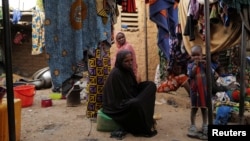Millions of people in the Sahel and West Africa are facing the worst food crisis in a decade as conflict and climate disasters send the price of essential commodities soaring.
The World Food Program reports the number of hungry people across West Africa and the Sahel has quadrupled to 41 million between 2019 and 2022. This includes 16 million urban poor at risk of acute food insecurity, with many already surviving on a starvation diet.
Sib Ollo, WFP's senior research, assessment and monitoring adviser for West and Central Africa, said six million children in the Sahel are suffering from malnutrition, and under-nutrition is a general problem throughout the region.
"The economy is recovering from the COVID impact, but still very slowly," he said from the Senegalese capital, Dakar. "Last year the agricultural season was extremely bad, and millions of farmers have lost their production and many of them will not have enough food that will last until the next lean season or even the next harvest season."
He said conflict has displaced more than six million people in the Sahel, and border closures are causing food price hikes.
"The farmers, in particular, they are worried for the next agricultural season, mainly because many of them will not be able to access, to have fertilizers. The cost of fertilizers has increased by almost 30 percent in many places of the region due to the supply disruption that we see brought on by the crisis in Ukraine," Ollo said.
The United Nations reports the conflict in Ukraine is disrupting the global trade of food, fertilizers, and oil products. It says shortages of these commodities are driving up food and fuel prices across the globe.
Ollo said WFP needs $777 million to provide life-saving humanitarian assistance for 22 million people in the Sahel and Nigeria over the next six months.










